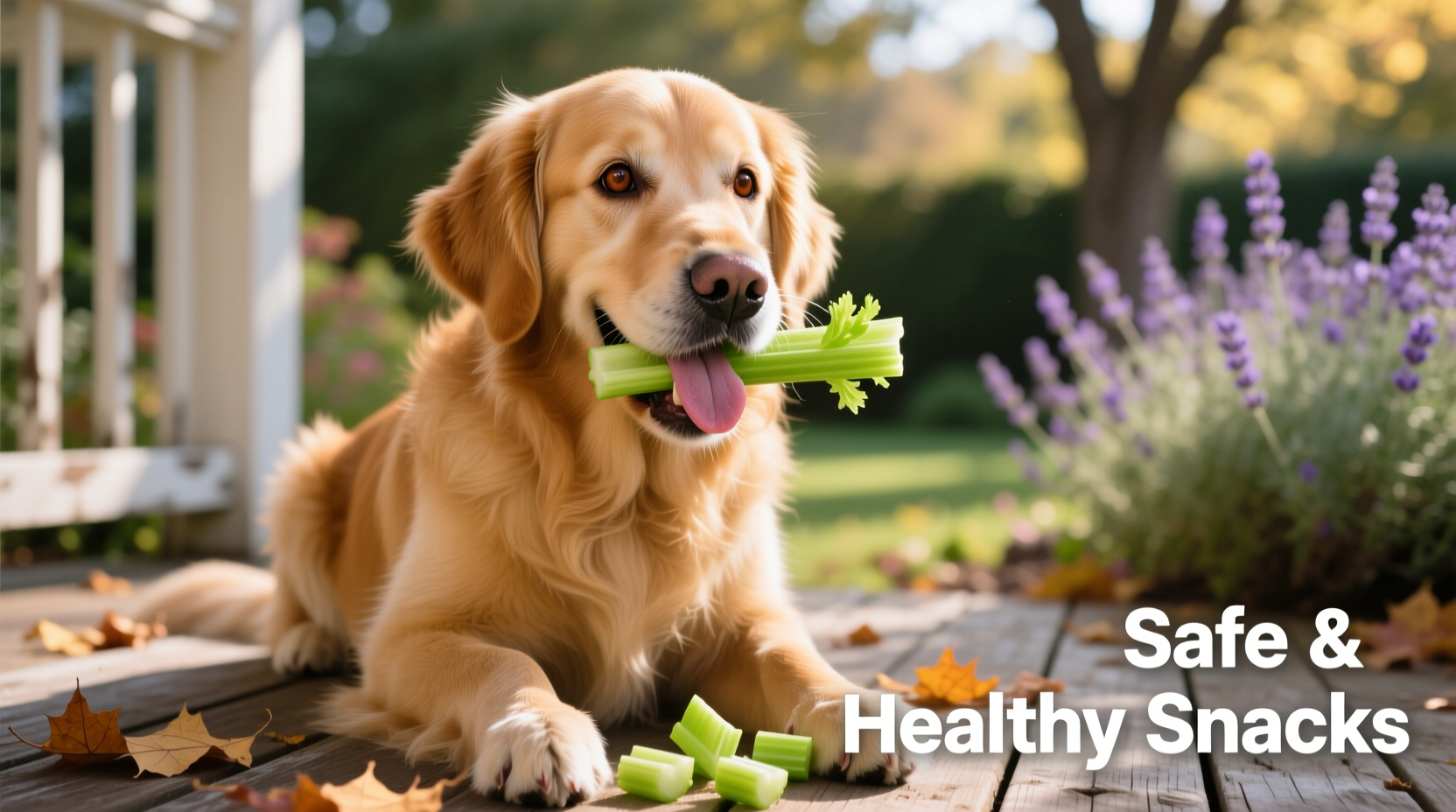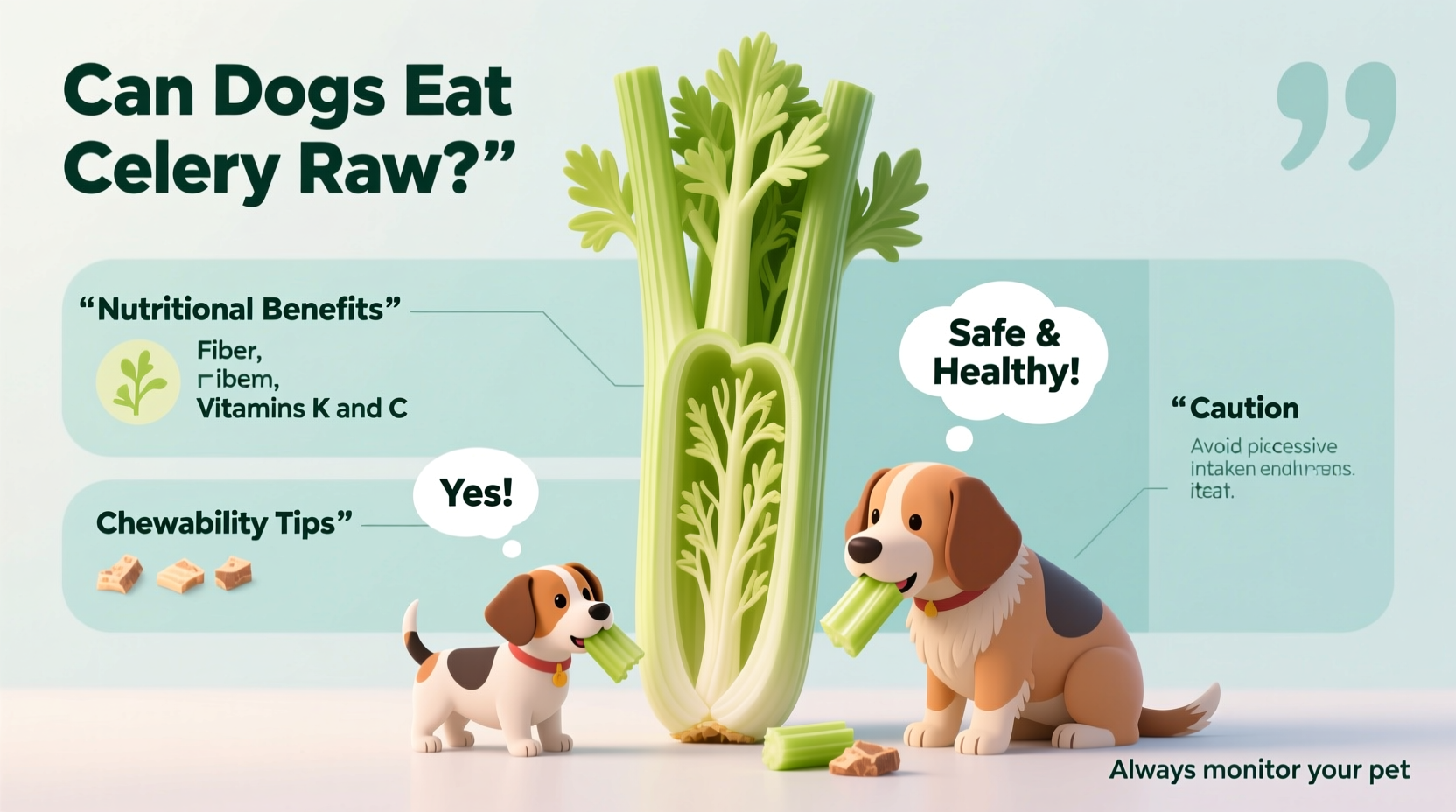Yes, dogs can safely eat raw celery in moderation. This crunchy vegetable provides hydration, vitamins, and fiber without excessive calories, making it a healthy occasional treat when properly prepared. Always cut celery into bite-sized pieces to prevent choking and introduce it gradually to monitor your dog's digestive response.
Wondering if that crisp stalk of celery on your snack plate could be shared with your furry companion? You're not alone—thousands of dog owners search for safe human foods daily. As a pet nutrition specialist, I've seen how confusing conflicting information online can be. This guide cuts through the noise with veterinarian-approved facts about feeding raw celery to dogs, including exactly how much is safe, preparation methods that maximize benefits, and clear warning signs to watch for.
Why Celery Makes a Smart Snack Choice for Dogs
Celery isn't just safe—it offers surprising nutritional advantages when served appropriately. This low-calorie vegetable contains essential vitamins K and C, plus potassium and folate that support your dog's overall health. With only 6 calories per 100 grams, celery provides a satisfying crunch without derailing your pet's diet, making it ideal for weight management programs recommended by veterinary nutritionists.
Research from the ASPCA confirms celery's safety as an occasional treat, noting its high water content (95%) helps with hydration—particularly valuable during hot weather or after exercise. Unlike many commercial treats packed with preservatives, raw celery delivers natural fiber that promotes healthy digestion when introduced gradually.
| Nutrient | Per 100g Celery | Benefit for Dogs |
|---|---|---|
| Calories | 16 kcal | Weight management support |
| Water Content | 95% | Natural hydration |
| Dietary Fiber | 1.6g | Digestive health maintenance |
| Vitamin K | 29.6µg | Blood clotting and bone health |
When Celery Becomes a Concern: Critical Safety Guidelines
While generally safe, raw celery presents specific risks requiring careful management. The Cornell University College of Veterinary Medicine emphasizes that improper preparation causes most vegetable-related emergencies in pets. Celery's stringy fibers can become choking hazards or cause intestinal blockages if not cut correctly.
Follow these vet-recommended precautions:
- Size matters: Cut celery into 1-inch pieces for small dogs, 2-inch for larger breeds
- Moderation is key: Limit to 1-2 small pieces daily for most dogs
- Introduce slowly: Start with tiny amounts to monitor digestive response
- Avoid leaves: Celery leaves contain higher concentrations of psoralens
Dogs with kidney disease should avoid celery due to its natural sodium content. Puppies under six months require special caution—their developing digestive systems handle fibrous foods less efficiently. If your dog shows vomiting, diarrhea, or lethargy after eating celery, contact your veterinarian immediately.

Preparing Celery for Maximum Safety and Benefit
Proper preparation transforms celery from a potential hazard into a valuable treat. Veterinary nutritionists recommend these steps:
- Wash thoroughly: Remove pesticides using a vegetable brush under running water
- Remove strings: Peel outer fibers with a vegetable peeler for easier digestion
- Cut appropriately: Slice perpendicular to the grain into small, manageable pieces
- Test texture: Ensure pieces bend easily before serving
For dogs new to celery, try freezing small pieces as cooling summer treats. The American Veterinary Medical Association confirms frozen vegetables provide mental stimulation while satisfying chewing instincts. Never serve celery with added seasonings, butter, or dips—these often contain toxic ingredients like garlic or onion powder.
Celery in Context: How It Compares to Other Dog-Safe Vegetables
Understanding where celery fits among safe vegetable options helps create balanced treat routines. While carrots provide more beta-carotene and green beans offer higher protein content, celery's unique advantage lies in its exceptional hydration properties. Unlike starchy vegetables such as potatoes, celery won't cause blood sugar spikes, making it suitable for diabetic dogs under veterinary supervision.
Consider these practical scenarios:
- Training rewards: Celery's low calorie count makes ideal frequent-reward treats
- Dental health: The crunchy texture helps reduce plaque buildup
- Weight management: Replaces high-calorie commercial treats effectively
- Hydration boost: Particularly valuable for dogs reluctant to drink water
When to Consult Your Veterinarian About Dietary Changes
While celery is generally safe, individual health conditions may require special considerations. Consult your veterinarian before introducing celery if your dog has:
- History of pancreatitis
- Kidney disease
- Digestive sensitivities
- Current medication regimens
Veterinary professionals can provide personalized portion recommendations based on your dog's size, breed, and health status. Remember that treats—including healthy vegetables—should never exceed 10% of your dog's daily caloric intake. Your vet can help calculate appropriate amounts within your pet's complete nutrition plan.
Final Recommendations for Safe Celery Feeding
Raw celery serves as a nutritious, hydrating treat when prepared correctly and given in appropriate portions. Start with small amounts to assess tolerance, always cut to prevent choking hazards, and monitor your dog's response. For most healthy adult dogs, 1-2 small pieces 2-3 times weekly provides benefits without digestive upset.
Remember that celery should complement—not replace—your dog's balanced diet. When in doubt about any human food introduction, consult your veterinarian for guidance tailored to your pet's specific needs. With proper preparation and portion control, this crunchy vegetable can become a healthy addition to your dog's treat rotation.











 浙公网安备
33010002000092号
浙公网安备
33010002000092号 浙B2-20120091-4
浙B2-20120091-4